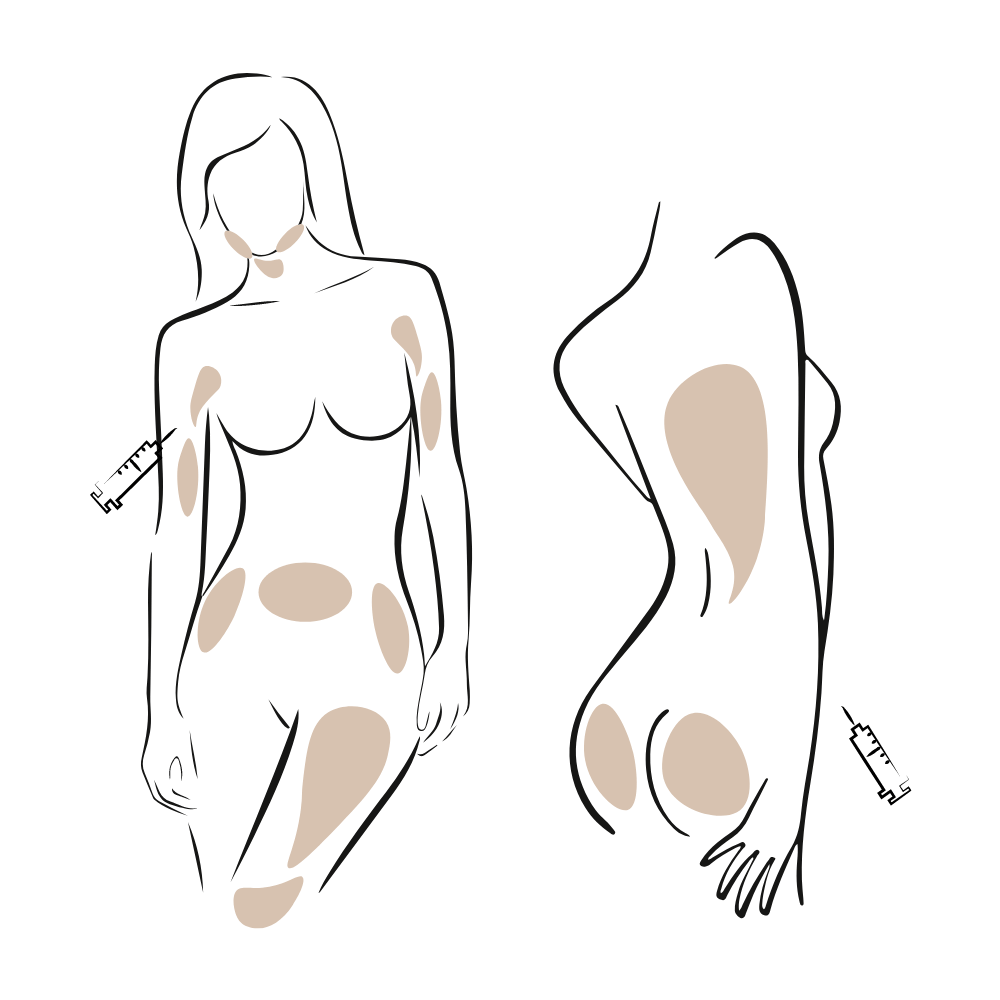Basics of the fat-dissolving injection
The fat-dissolving injection is based on the injection of a special solution into the fatty tissue layer. This solution usually contains substances such as phosphatidylcholine (PPC) and deoxycholic acid (DC). PPC is a natural substance found in cell membranes that regulates fat metabolism. DC is a bile acid that destabilizes fat cells and promotes fat breakdown. This combination aims to dissolve fat cells and support the body in eliminating the broken-down fat. When only small amounts of fat need to be removed, as in the case of correcting an excessive autologous fat transplantation, very small doses of cortisone injected with ultra-fine needles can also provide a highly effective and precise correction.

Use of the fat-dissolving injection in aesthetic medicine
The fat-dissolving injection is primarily used to treat small fat deposits that cannot be reduced despite a healthy diet and regular exercise. Typical treatment areas include the double chin, abdominal region, hips, thighs, and upper arms. The treatment is usually performed in several sessions, as the breakdown of fat occurs only gradually. The exact number of sessions depends on individual factors such as the extent of the fatty tissue and the patient’s goals.
Potential risks and dangers of the fat-dissolving injection:
Although the fat-dissolving injection is considered a non-surgical method, potential risks and side effects must be taken into account. It is important that patients are fully informed about these before undergoing treatment.
Potential risks include:
- Pain and swelling: After the treatment, pain and swelling may occur at the injection sites. These are usually temporary and subside within a few days.
- Bruising: The injections may cause bruising, especially when sensitive areas such as the face are treated. The bruises usually disappear within one to two weeks.
- Infections: As with any invasive procedure, there is a risk of infection. It is of utmost importance that the treatment is performed by qualified and experienced professionals to minimize this risk.
- Irregular results: The results of the fat-dissolving injection can vary from person to person. Some people achieve a noticeable reduction in fat tissue, while others may see only minor changes. Expectations should be realistic, and patients should be aware that the fat-dissolving injection does not cause drastic weight loss.
- Systemic effects: Although rare, there is a theoretical possibility that the substances contained in the solution could cause systemic side effects. Thorough knowledge of the individual’s medical history and treatment by qualified professionals minimize the risk of complications.
- Long-term effects: Since the long-term side effects of the fat-dissolving injection have not yet been fully studied, both patients and physicians should proceed with caution. However, no problems are currently known that would constitute a contraindication for its use. It is important to understand that the fat-dissolving injection does not affect metabolism — meaning that weight gain can still occur after treatment.
Personal experiences
I currently use the fat-dissolving injection only to correct remaining irregularities after autologous fat transplantation in the face, using very small doses of cortisone administered with a diabetic syringe and ultra-fine needles. I do not use this method as a substitute for liposuction, as in my opinion it is neither well controllable nor nearly as effective as a properly performed liposuction. In addition, the costs are not particularly motivating for patients: since lipolysis almost always requires several sessions, treatments with the fat-dissolving injection often cost just as much, if not more, than a single, well-performed liposuction.

